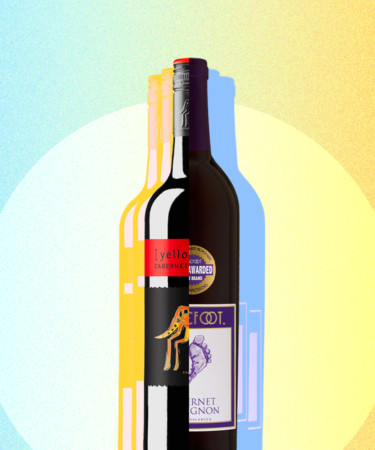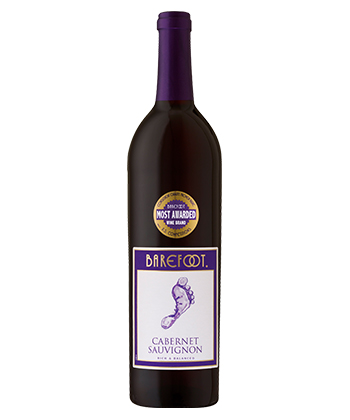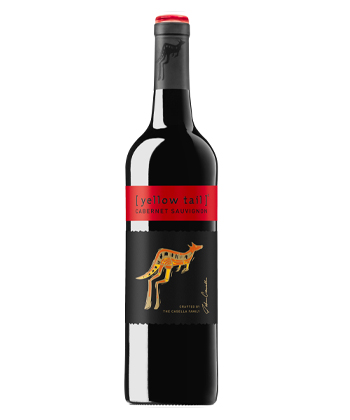Best-selling brands Barefoot and Yellow Tail are known for their straightforward wines that can be easily found in grocery, liquor, and big-box stores across the U.S. Their unusual but iconic logos, a bared foot and the Rock Wallaby, have come to mean value and consistency for many wine drinkers.
According to the American Association of Wine Economists, Barefoot came in second on the list of top wine brands in America in 2018, with a production volume of more than 20 million cases. Yellow Tail was eighth on the list, with over 7 million cases produced that same year.
While both started small with humble roots, Barefoot and Yellow Tail built themselves into powerhouse brands that would come to define a new era of affordable and accessible wine. Keep reading to learn more about how these two companies redefined the wine industry.
Origin
In 1986, business coaches Michael Houlihan and Bonnie Harvey took over Barefoot Bynum Burgundy, a California-based company founded in the garage of home-winemaker and future Pinot Noir pioneer, Davis Bynum. The couple renamed the label Barefoot Cellars and gave it the slogan, “Get Barefoot and have a great time,” playing up the brand’s approachability.
Having no prior experience in the wine industry, Houlihan told Forbes in 2014, the couple’s naivety actually helped revolutionize wine. “When we started in 1986, wine was formal and exclusive,” he said. “We made it fun and inclusive. The industry thought a wine with a foot on it would never sell.” In 2005, the couple sold the brand to E&J Gallo, the world’s largest family-owned winery, for an undisclosed amount.
On the other side of the world in the late 1990s, John Casella, the son of two Sicilian vineyard owners in southeastern Australia, had recently taken over his parents’ business and set his sights on the U.S market. At the time, Italian and French wines ruled the import game, while Australian wine had yet to make a significant dent in the U.S. market. As VinePair explains, “In 1992, imports of Australian wine accounted for only around 3 percent of all imported wine to the United States.” Casella was about to change that.
In 2001, Casella joined forces with Deutsch Family Wine and Spirits, who in a 50/50 partnership agreed to distribute his wines as Yellow Tail in the U.S. By the end of that same year, the two families had sold 200,000 cases, and by 2002, sales spiked to 2.2 million cases.
Production
Jonah Dill-D’Ascoli, the bar director at Rosemary’s East in New York, points out that each brand “specializes in large-scale production in climates that are conducive to growing large quantities of grapes.” Yellow Tail’s grapes are grown in the “open areas” of New South Wales in Australia, while Barefoot’s grapes mainly come from California’s Central Valley.
“Both regions allow for easy growing and machine picking, which helps keep their costs down (thus their intrigue for use at college parties),” he adds.
Flavor
In addition to its beloved Shiraz, Yellow Tail’s portfolio includes an extensive collection of still and sparkling wines, bottled sangria, a reserve line, vegan-friendly wines, and a lower-ABV line launched in 2019. Barefoot presents an equally large range of still wines, sparkling wines, canned spritzes, and even hard seltzers.
When comparing the two brands, Dill-D’ascoli says they have some interesting differences: “Yellow Tail for me is all about big flavors — their reds are very jammy [and] their whites have a lot of fruit on them.,” he says. “Barefoot also does a lot of big flavors but I always find their acidity to be more balanced.”
What the Pros Think
While some wine drinkers may be quick to dismiss both brands as best left to undiscerning college students, according to The New York Times, the renowned American wine critic Robert M. Parker Jr., praised Yellow Tail, writing: “In some wine circles, it is fashionable to criticize wine of this genre … but if the truth be known, these are surprisingly well-made offerings.”
For Dill-D’ascoli, the appeal of Yellow Tail and Barefoot lies in their ability to stay true to their mission. “Both brands have positioned themselves as the brand of their country, so [they] have worked to build a bit of Australian or American terroir into their DNA,” he says. “At the end of the day the similarities between these two brands outweighs the differences. They both represent their respective category well, are easy to drink, and can be found everywhere.”


